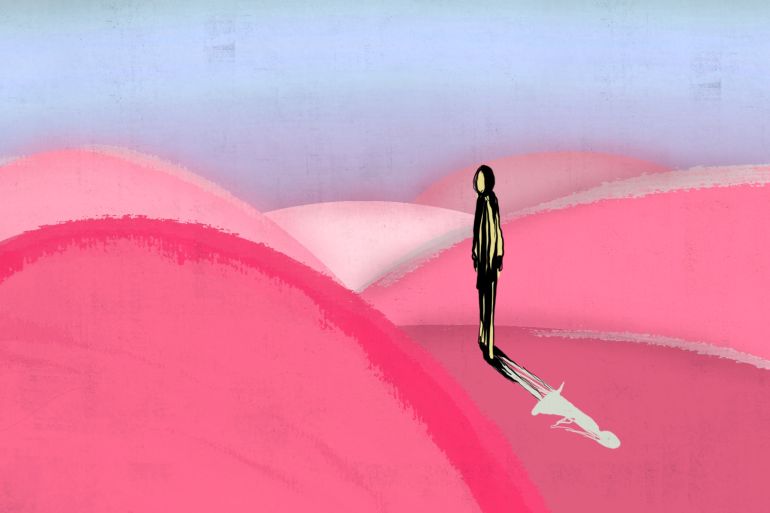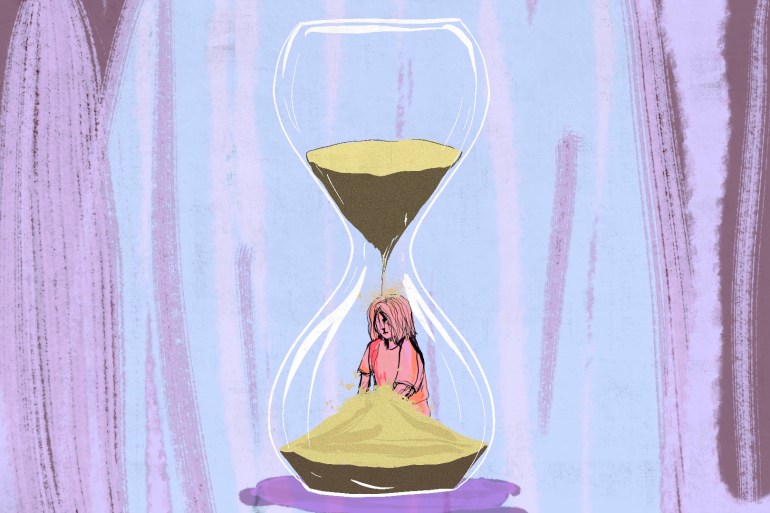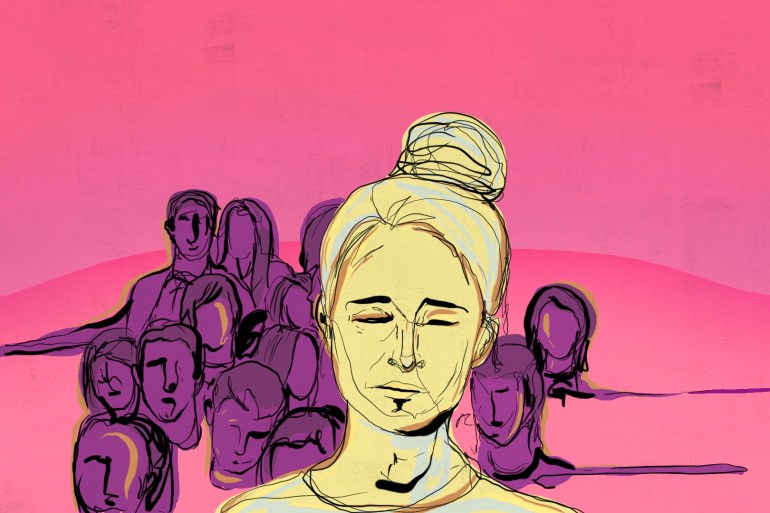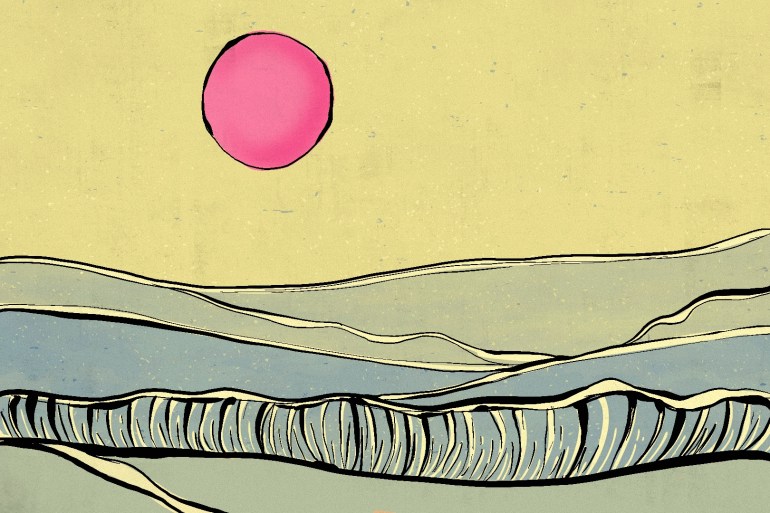‘I have sacrificed a lot’: Growing up LGBTQ+ in India
LGBTQ+ Indians who battle family expectations and social pressures to live their authentic lives share their stories.

Listen to this story:
Like most parents, Sourav’s would like to see him “settled”. In India, however, this is a loaded concept. Being happy, healthy and financially secure are all important, but making a good marriage is the cornerstone of “settling down”. Indeed, 26-year-old Sourav, an IT professional in one of India’s metro cities, would make a wonderful husband to a man of his choice. But that is the problem.
Keep reading
list of 4 itemsFrom Pakistan to India: Tracing my grandmother’s refugee journey
The lessons trauma taught me: A car expert’s tale
An Indian abroad: ‘My mind is a graveyard of the living’
In 2017, when he told his parents he was gay, their illusion of him as the perfect son shattered. He recalled how his mother cried so much, she required emergency hospitalisation for dehydration and low blood pressure. His father did not speak to him for three months.
Unlike Sourav, who confidently asserts himself as a gay man despite the pushback from his loved ones, back in the 1980s and 1990s, I had no terminology to describe what I was. Even growing up in a family that considered itself progressive, I was continually shamed for being non-gender conforming, and coerced to correct myself – forced into feminine clothes, told off for “wanting to be a boy”. It is no surprise, then, that I was convinced I was broken by the time I reached my teens.
Decades of self-hate, low self-esteem and confusion followed. I had zero understanding of sexualities and genders, apart from the fact that to deviate was abnormal and shameful. But just as I paid the price for keeping my inner demons locked inside and pretending to be “normal” – at least “normal enough” – Sourav, who asked that his surname not be used in this article, paid for being honest.
For the past few years, he has lived with a relentless barrage of verbal and emotional violence. There was emotional blackmail, including being blamed for his mother’s illness; being taken by his parents to consult a homophobic neuropsychiatrist who diagnosed him with a “sexual disorder”, prescribed medication for it and recommended counselling to correct his ways; and oppressive parental surveillance, aided by the lack of privacy in their two-room home. When all else failed, his parents told him if he married a woman, even one who did not expect sexual interaction with her husband, they would be satisfied. That way, they wouldn’t lose face in society.
Waiting to transition
“What will people say?”
Middle-class India lives in horror of this question. This fear is wielded with efficiency to pressurise non-conformists to toe the line, and families by and large get away with it. This is because, as a rule, they are supportive spaces, providing physical, emotional and financial support, even to adult children. They can be multi-generational, fluid enough to expand to include outsiders in an “any friend of my child is like my own child” kind of way. This often gives same-gender couples a kind of tacit acceptance, albeit through invisibility as they are seen as “good friends” rather than a couple.
At the same time, families can be sites of continual violence, obsessed with maintaining the veneer of “respectability” by policing its members’ behaviour in return for succour.

Kay (name changed) is a trans woman in her 20s from Delhi. She is a law student and lives with her parents, to whom she came out two years ago. During our Zoom conversation, when I asked how her parents had taken it, she asked if she could type instead of speaking. I understood that to mean that her family was around and she could not talk freely. Sure enough, she typed: “They didn’t take it nicely at all. They were in shock.” As things stand, “they are [still] in denial.”
Currently, Kay is only out in some places – her college and on social media. Ideally, she would have liked to have started transitioning. To do so as a student while living at home would make dealing with legal and medical issues simpler, she said. “[At a workplace] you have to forgo your salary, [and] especially [working] in litigation, you may not have a place to come back to [once] you leave.”
In deference to her parents’ discomfort, however, she is holding off. Even though she has access to medical professionals who are ready to give her the requisite sign-off to begin transitioning, her parents want her to have a “more long-term assessment.” She doesn’t know how long.
“The problem is, if I start transitioning, then I have to start opening up in my neighbourhood… I’ve been fairly masculine-presenting for a long time here, so then there will be far more questions, far more backlash. And it can have problems with my parents’ workplaces.” Her parents hold bank and government jobs, yet fear that having a trans child might bring them judgement and shame from their peers.
Conversion therapy
Sourav’s humiliation at the hands of a medical professional sounds like a different kind of oppression to Kay delaying her transition in deference to her family’s wishes. As does the way I tried to conform to make my life easier. But in mid-2020, after speaking to Kaustav Bakshi, an assistant professor at Jadavpur University, Kolkata, and a researcher on queer lives, I realised that they are all a form of what is often called conversion therapy.
Conversion therapy is not only the targeted intervention of unscrupulous professionals and quacks coercing, medicating and brain-washing LGBTQ+ people to feel they have to “correct” their sexual orientations and gender; it is also the latent and stealthy ways that we are conditioned to behave.
In the mid-2000s, a heartbroken Kaustav, barely out of his teens then, had approached his college counsellor for support. To his horror, she told him that he was “not normal”, followed by advice commonly given to young gay men: become more “masculine”. Make more male friends, play a sport, join a gym, he was told. He can see the funny side of it now. “I’m very happy to be a part of the gym and drool over all those beautiful bodies,” he deadpanned over Zoom.
But the problem is, he said, “Everyone around assumes that I am heterosexual. This assumption itself has in it roots of conversion.”
In May 2020, the death of 21-year-old Anjana Hareesh horrified the country. Anjana had been forced to undergo a conversion therapy regime by her family to “cure” her bisexuality. Before she died by suicide, she had posted on social media about being forced to go to a rehab centre where she was plied with medication that made her groggy.
Anjana’s death shone a spotlight on the unscientific, illegal and inhuman nature of such treatments. Activists, mental health practitioners and official bodies were united in decrying these practices and highlighting their illegal nature.
But the conversation around conversion therapy tends to focus on the technicalities of the illegal or pseudoscientific nature of these “treatments”. Meanwhile, an overall mindset gap in accepting sexualities and genders continues to put queer and trans people at risk.
‘A lot of energy goes into surviving’
Pooja (who did not want to share her full name) is a psychotherapist in her thirties, working with the Mumbai-based Mariwala Health Initiative. She helped develop and delivers a queer-affirmative counselling practice curriculum. In her experience, mental health professionals are not necessarily supportive all the time: “It’s fairly easy to find someone who can try and ‘fix’ you.”
Pooja has a very “interesting” (her words) location – a cis-woman and a lesbian in a profession that already teaches her peers that she is abnormal. She has lived experience of the erasure that happens in households with queer or trans people. “There is an everydayness to it,” she said when we spoke in August 2020 about how COVID-19 was affecting queer folk. “It dates back to pre-corona times and will also be a post-corona reality.”
We spoke in detail about this more recently – the stress that comes from the constant fear of being “outed” or having to police one’s behaviour day in and day out. “That kind of stress leads to hyper-vigilance, self-censoring and a lot of performing of normativity,” she said. All for the sake of coping. “A lot of energy and resources go into surviving, and the person may struggle to see oneself and one’s reality as authentic and valid,” she added.

Learning to be hyper-vigilant, censoring one’s gender expression, forcing oneself into uncomfortable moulds, learning not to voice unease – it all sounded distressingly familiar to me. Even though Pooja was gender-conforming and I was not, we had grown up performing the same kind of normativity.
Growing up, Pooja’s gender conformity had confused her. Because she presented and behaved like most other girls, she assumed that she would be heterosexual. It was in her mid-20s that she realised she was looking for masculinity in women, that it had nothing to do with men, cis or trans.
I had spent my adolescence and youth incapable of understanding my gender. Why was I more masculine-presenting yet disliked being called a boy (even in my mid-30s, I looked like a teenager with my hairless face)? Then, one day, I read a book that asked, “What makes you a woman?”
The question stumped me. I had no answer. That was the first inkling I had that there were more than two genders.
Coming out
As in many conservative societies, gender roles in India are strictly demarcated. In many places and situations, mixing between boys and girls is discouraged, and sex and sexuality are taboo topics outside of marriage. This means that children, and especially LGBTQ+ children, often grow up with no terminology to explain their identities. The internet is beginning to change this, at least for more affluent youngsters but, in my experience, having the vocabulary to describe who you are does not necessarily come with understanding oneself.
Vidya, who asked that her name be changed, is a trans woman in her thirties who works in academia and experienced a similar crossing of signals. “I was in a boys’ school… I remember crying in first grade because I probably didn’t feel like I belonged there, but the scolding from teachers that I got made me realise that I should just remain quiet… I don’t think I ever expressed discomfort [about my gender]…ever again until I came out at age 31. I simply learned to keep any such doubts to myself.” Not having any stereotypical masculine or feminine interests also kept her from questioning herself too much.
Many of the available terms are Western in origin, and they get bent out of shape when forced into South Asian contexts. Like, the idea of “coming out” and being “out”. In her line of work, Pooja sees many young Indians, particularly those who have access to Western entertainment media, internalise the notion that coming out is the only affirming way to assert one’s identity, and being out is the only honest way to be queer.
“There are…young people in their 20s who are writing on social media that they just came out, and then everyone is cheering them on, and I’m wondering if that is putting pressure [on others to do the same].” She managed numerous crisis cases in 2020 when newly out youngsters would find themselves needing to flee their homes in the midst of the lockdown.
Perhaps these youngsters don’t realise what they see on television or the internet are whitewashed slices of the whole picture, Pooja added. “Nobody’s talking about the risks of coming out, nobody’s talking about support systems to be built, or that this could be a difficult thing.” Those who are dependent on family money, and take for granted that they will be financially supported by parents who can help them find jobs, often have it worse when they come out and find themselves cut off from the resources they are used to, with no social welfare to fall back on.
‘I don’t want to keep lying’
Yet many LGBTQ+ Indians do make some sort of peace with their situations and carve out spaces for themselves. They might not always align with a Western notion of being “out and proud”, but they are sometimes good enough for those who choose them. For example, my partner of 12 years and I are routinely seen as sisters or cousins, and our families know that we come as a package. We can live with that, especially because we know we set a visible example of leading a different kind of life.
Vidya and her soon-to-be ex-partner co-parent a child who was born after Vidya started to live as her authentic self. Although their child’s school is supportive, she is under no illusions that her child will not face trouble from their contemporaries at some point. For now, when the child asks why one of their mothers “looks like a boy” in her old photos, Vidya’s explanation is: “I had a problem back then, for which I went to a doctor, and then I started looking like a girl.” Technically correct and perfectly clear to a four-year-old.

On the other hand, Kay’s situation is one of the uncomfortable compromises. Delaying her transition has been traumatic: “I am like a floating wooden plank on a sea, endless boundless sea, with no space to anchor… I feel like I have sacrificed already a lot… I’ve had a lot of years having to hide myself, having to keep lying. And I don’t want to keep lying.” Leaving her family, though, is not on the cards.
For Sourav, too, despite the continuing emotional violence, leaving his parents is not an option. He believes that if his father had not been homophobic, his mother would have come around by now. It is not just filial duty that makes him optimistic; he is hoping history repeats itself. When he was at his lowest, Sourav found a sympathetic counsellor who gave him the reassurance he needed. “Magically…literally, she saved my life,” he said. The suicidal thoughts he had been having disappeared. Maybe magic can strike twice. Maybe one day his parents will realise that he has always been the perfect son.
The transphobic and homophobic people peddling illegal, unscrupulous treatments are not likely to disappear overnight. Nor are the narrow confines of social belief going to magically open up. But value systems are always in flux, as they are now and will be long after us.
If you are looking for LGBTQ-inclusive mental health support in India, consider The Pink List India’s collection of mental health professionals.